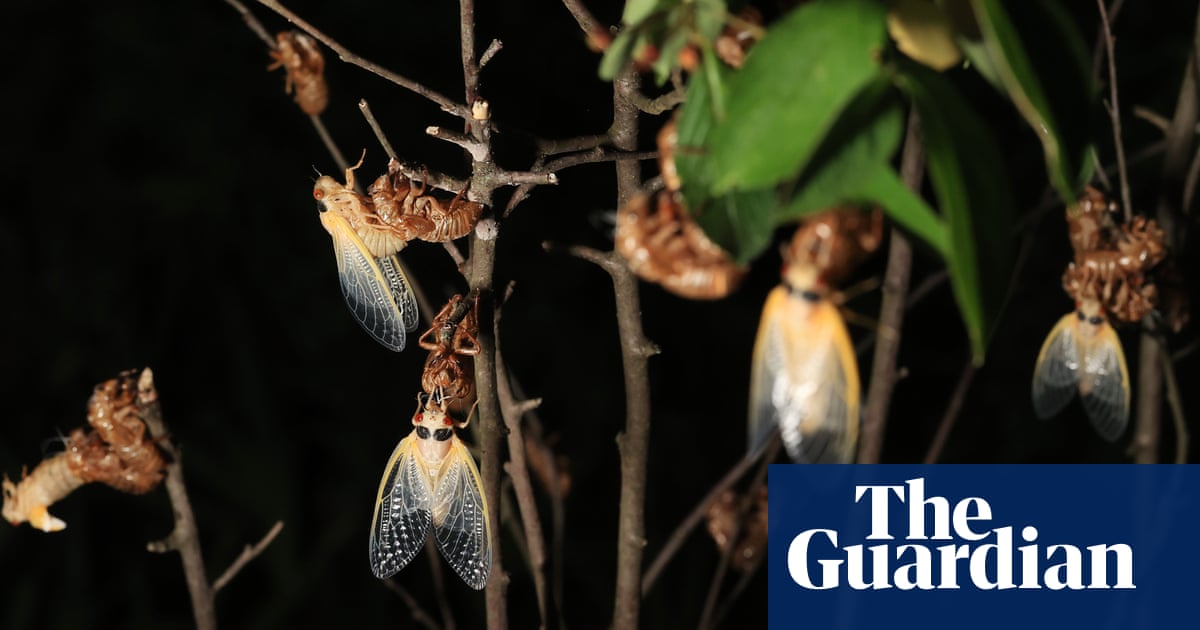- cross-posted to:
- usa
- cross-posted to:
- usa
The last time Brood XIX and Brood XII emerged from underground at the same time, Thomas Jefferson was president
They look a little like cockroaches and have bulging orange eyes, and trillions of them are about to erupt from the earth in much of the midwestern and eastern United States. The emergence of two groups of cicadas will assemble a chorus of the insects not seen in several hundred years, experts say.
The simultaneous appearance of the two cicada broods – known as Brood XIX and Brood XII – is a rare event, not having occurred since 1803, a year when Thomas Jefferson was US president. “It’s really exciting. I’ve been looking forward to this for many years,” said Catherine Dana, an entomologist who specializes in cicadas at the University of Illinois at Urbana-Champaign. “For the public, it’s going to be a really special experience.”
There are thousands of species of cicadas around the world but only 10 are considered periodical – having a life cycle that involves the juvenile cicadas living underground and feeding on plant sap for years before emerging en masse to the surface.
This year will see Brood XIX, the largest of all periodical cicada groups, emerge after a 13-year dormancy underground at the same time as Brood XII, a smaller group that appears every 17 years. The emergence will occur in spring, as early as this month in some places, and will see trillions of cicadas pop up in as many as 16 states, from Maryland to Oklahoma and from Illinois to Alabama.



https://cicadas.uconn.edu/
Don’t get me wrong, it’s exciting that these two broods are co-emerging, but broods co-emerge more frequently than hundreds of years